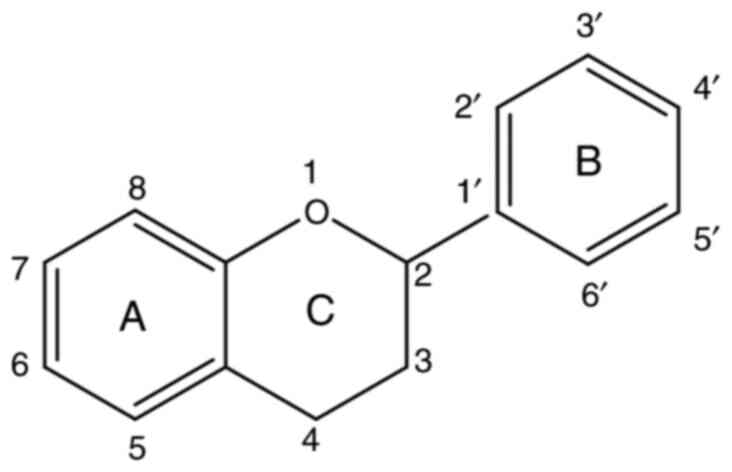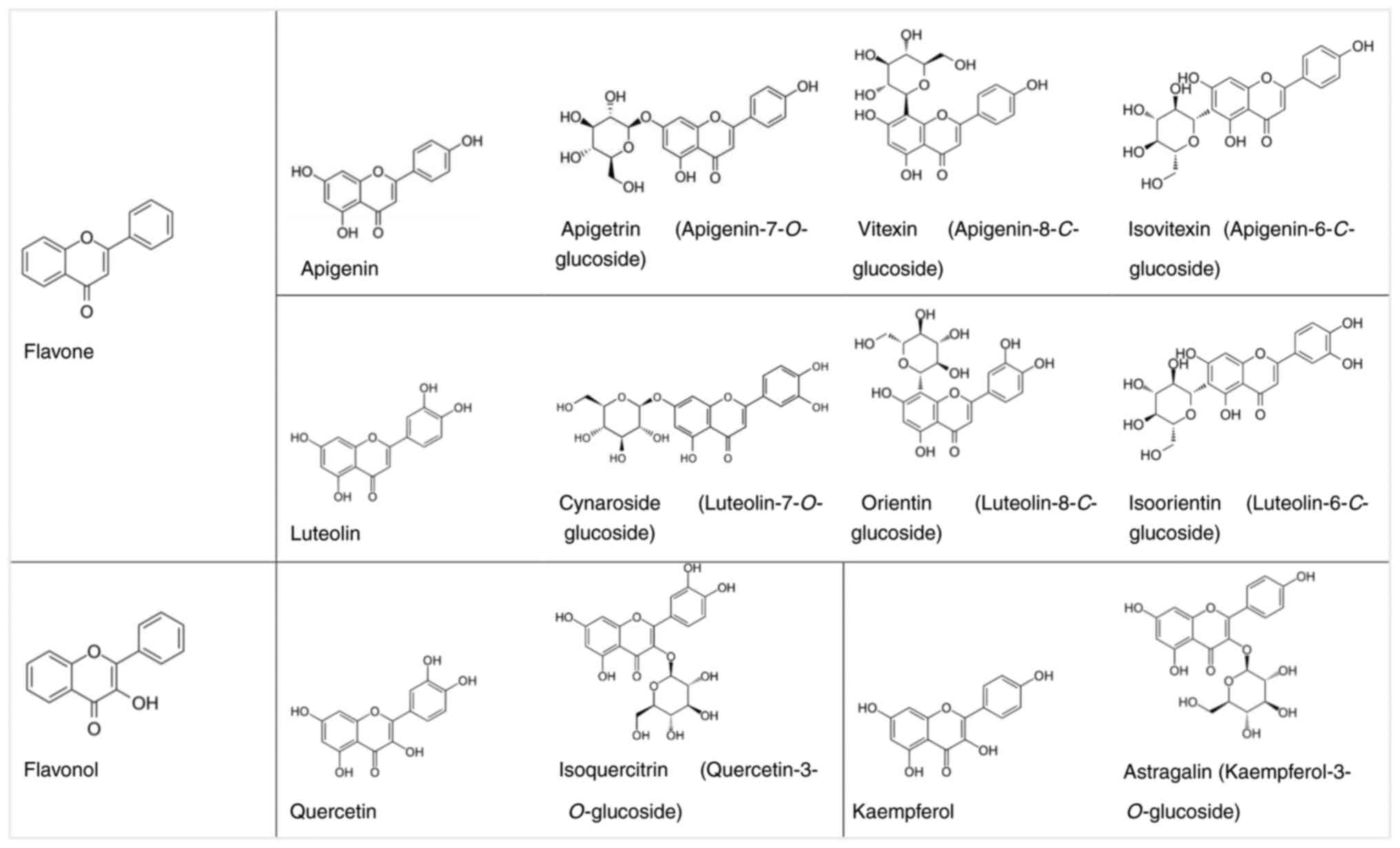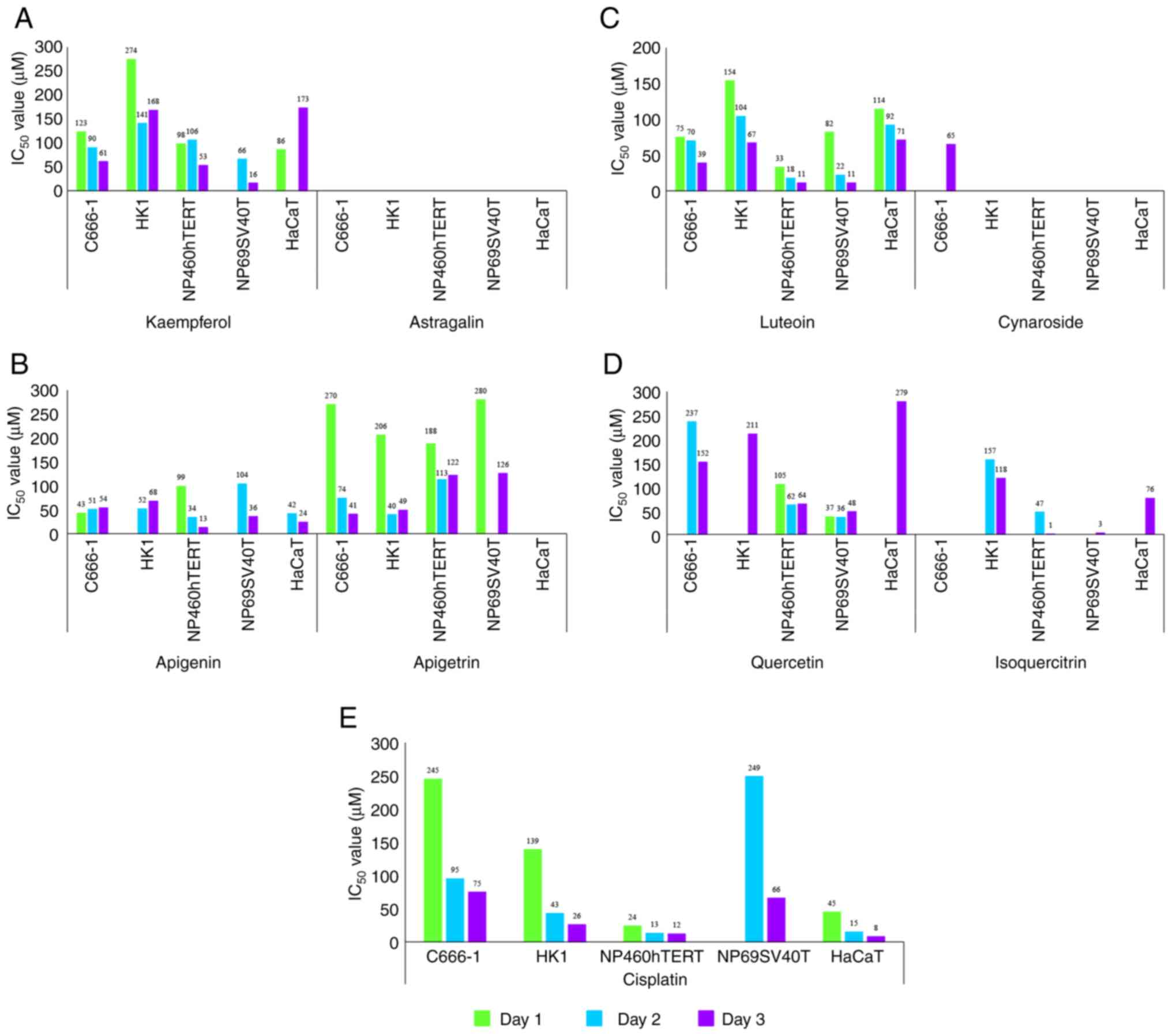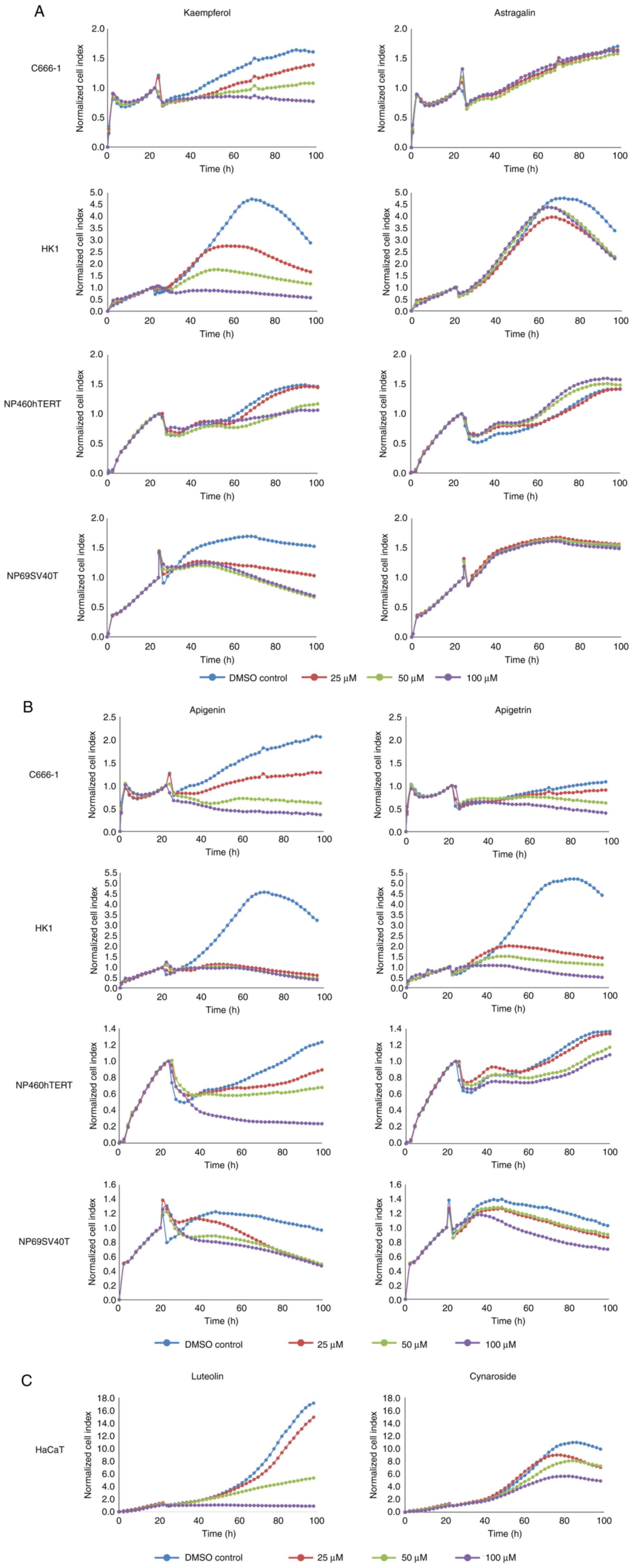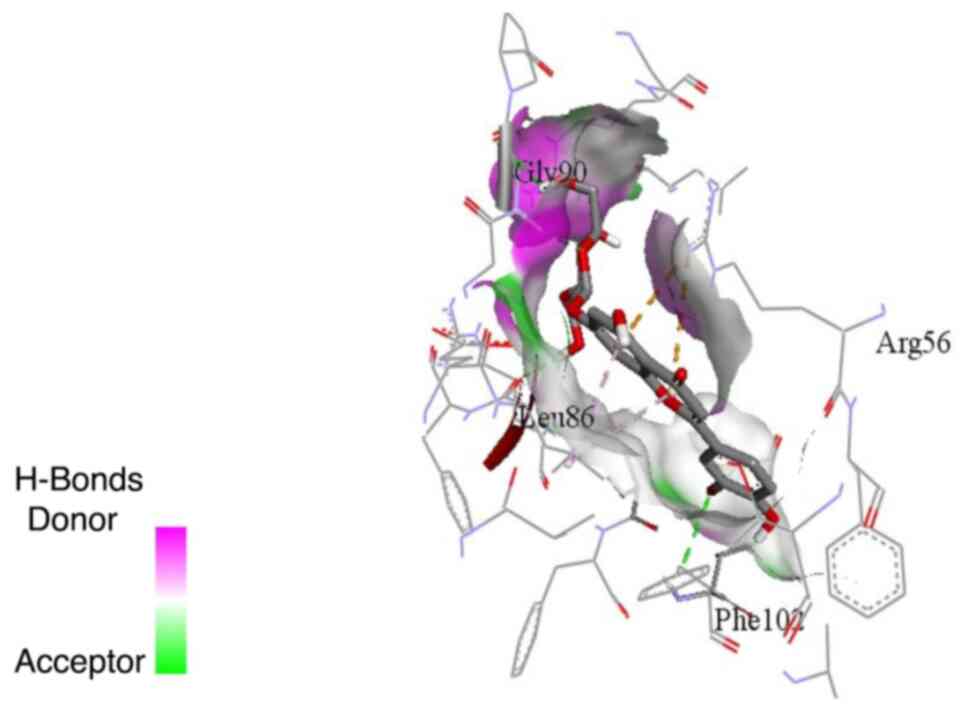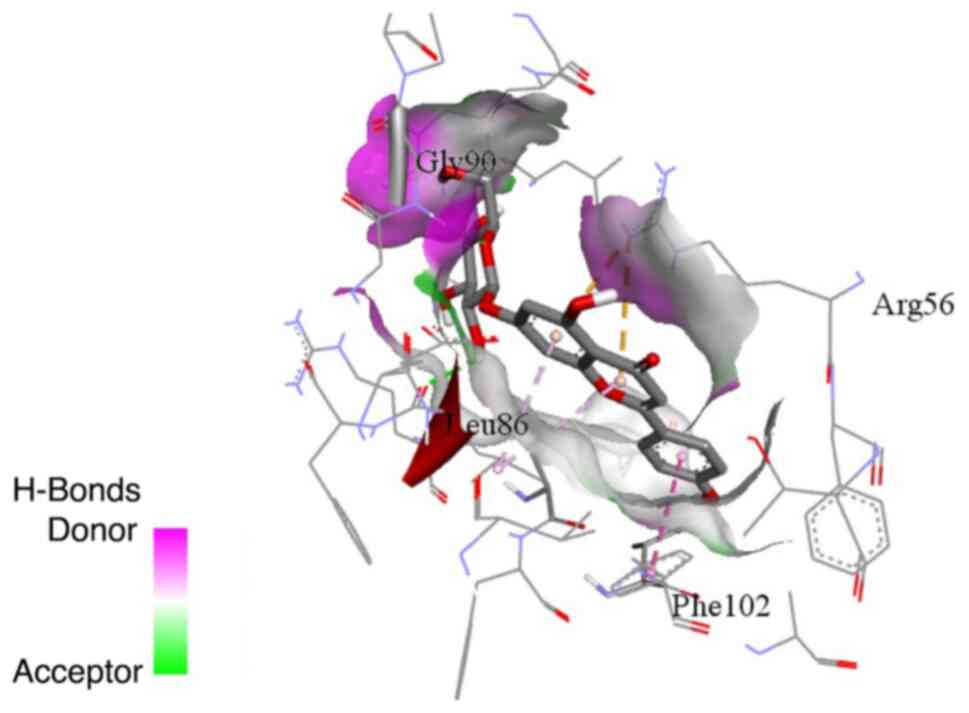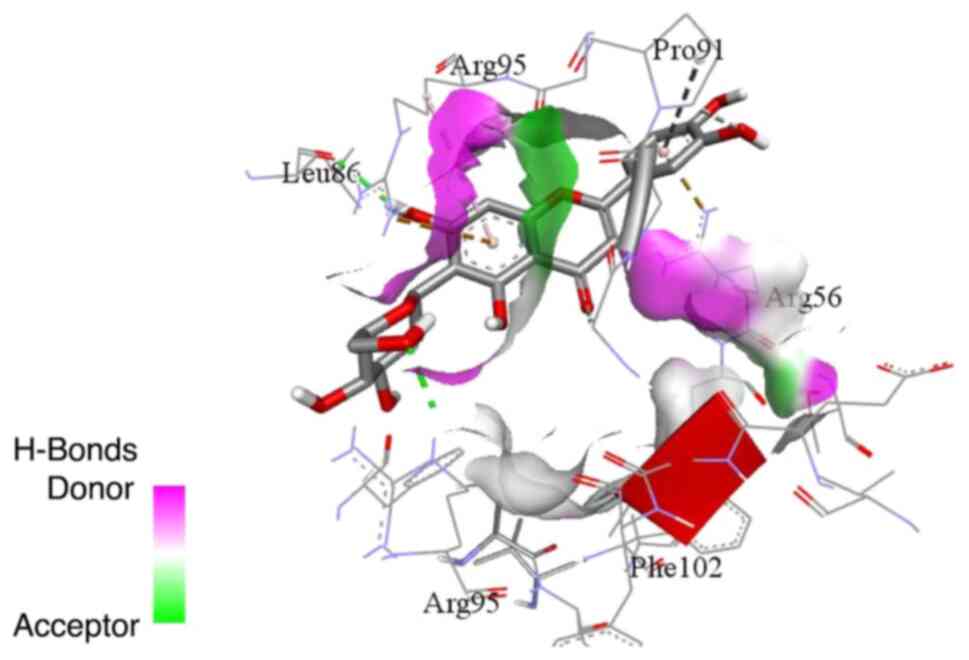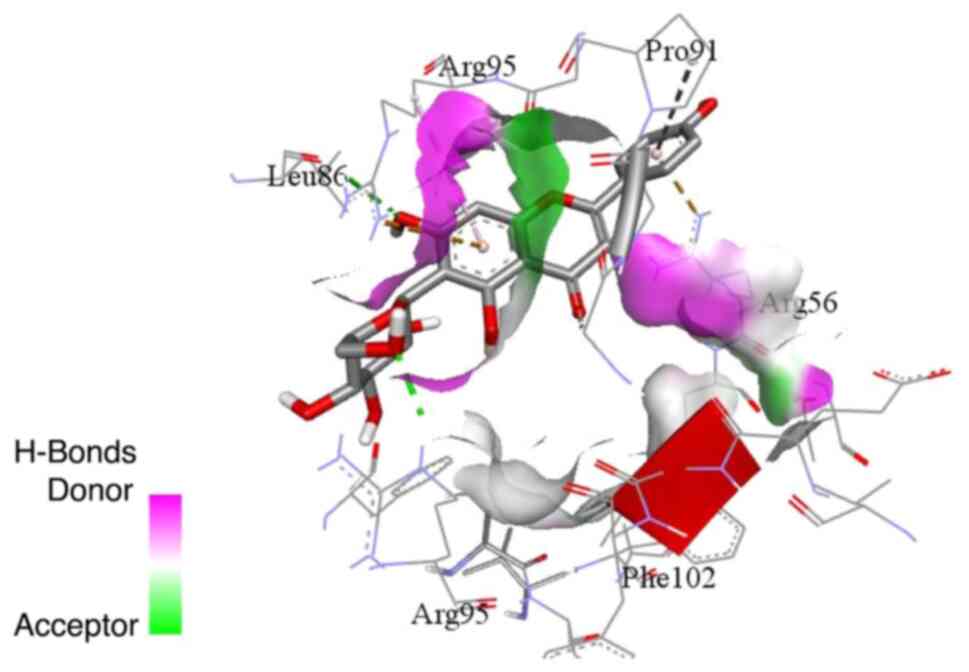|
1
|
Ferlay J, Ervik M, Lam F, Laversanne M,
Colombet M, Mery L, Piñeros M, Znaor A, Soerjomataram I and Bray F:
Global Cancer Observatory: Cancer Today (version 1.1).
International Agency for Research on Cancer, Lyon, 2024. https://gco.iarc.fr/today. Accessde November 25,
2024.
|
|
2
|
Ferlay J, Ervik M, Lam F, Laversanne M,
Colombet M, Mery L, Piñeros M, Znaor A, Soerjomataram I and Bray F:
Global Cancer Observatory: Cancer Tomorrow (version 1.1).
International Agency for Research on Cancer, Lyon, 2024. https://gco.iarc.fr/tomorrow. Accessed November 25,
2024.
|
|
3
|
Malaysia National Cancer Registry Report
2012-2016. National Cancer Registry Department, National Cancer
Institute, Ministry of Health, Malaysia, 2019.
|
|
4
|
Malaysian Study on Cancer Survival
(MySCan). National Cancer Registry, National Cancer Institute,
Ministry of Health Malaysia, Malaysia, 2018.
|
|
5
|
Incidence of Childhood Cancer in Malaysia
2007-2016. National Cancer Registry Department, Institut Kanser
Negara, Ministry of Health, Malaysia, 2021.
|
|
6
|
Chan JJC, Pilch BZ, Kuo TT, Wenig BM and
Lee AWM: Tumours of the nasopharynx. In: World Health Organization
Classification of Tumours: Pathology and Genetics of Head and Neck
Tumours. Barnes L, Eveson JW, Reichart P and Sidransky D (eds.).
IARC Press, Lyon, 2005.
|
|
7
|
Poh SS, Chua MLK and Wee JTS:
Carcinogenesis of nasopharyngeal carcinoma: Aan alternate
hypothetical mechanism. Chin J Cancer. 35(9)2016.PubMed/NCBI View Article : Google Scholar
|
|
8
|
Chua MLK, Wee JTS, Hui EP and Chan ATC:
Nasopharyngeal carcinoma. Lancet. 387:1012–1024. 2016.PubMed/NCBI View Article : Google Scholar
|
|
9
|
Tsao SW, Yip YL, Tsang CM, Pang PS, Lau
VM, Zhang G and Lo KW: Etiological factors of nasopharyngeal
carcinoma. Oral Oncol. 50:330–338. 2014.PubMed/NCBI View Article : Google Scholar
|
|
10
|
Epidemiology of Cancer in Sarawak
2007-2011. Sarawak Cancer Registry, Sarawak Health Department,
Malaysia, 2017.
|
|
11
|
Linton RE, Daker M, Khoo ASB, Choo DCY,
Viljoen M and Neilsen PM: Nasopharyngeal carcinoma among the
Bidayuh of Sarawak, Malaysia: History and risk factors. Oncol Lett.
22(514)2021.PubMed/NCBI View Article : Google Scholar
|
|
12
|
Shen N, Wang T, Gan Q, Liu S, Wang L and
Jin B: Plant flavonoids: Classification, distribution,
biosynthesis, and antioxidant activity. Food Chem.
383(132531)2022.PubMed/NCBI View Article : Google Scholar
|
|
13
|
Li XY, Luo DH, Guo L, Mo HY, Sun R, Guo
SS, Liu LT, Yang ZC, Yang JH, Qiu F, et al: Deintensified
chemoradiotherapy for pretreatment Epstein-barr virus DNA-selected
low-risk locoregionally advanced nasopharyngeal carcinoma: A phase
II randomized noninferiority trial. J Clin Oncol. 40:1163–1173.
2022.PubMed/NCBI View Article : Google Scholar
|
|
14
|
Tang QN, Liu LT, Qi B, Guo SS, Luo DH, Sun
R, Sun XS, Chen DP, Guo L, Mo HY, et al: Effect of concurrent
chemoradiotherapy with nedaplatin vs cisplatin on the long-term
outcomes of survival and toxic effects among patients with stage II
to IVB nasopharyngeal carcinoma: A 5-year follow-up secondary
analysis of a randomized clinical trial. JAMA Netw Open.
4(e2138470)2021.PubMed/NCBI View Article : Google Scholar
|
|
15
|
Kuhlmann MK, Horsch E, Burkhardt G, Wagner
M and Köhler H: Reduction of cisplatin toxicity in cultured renal
tubular cells by the bioflavonoid quercetin. Arch Toxicol.
72:536–540. 1998.PubMed/NCBI View Article : Google Scholar
|
|
16
|
Sanchez-Gonzalez PD, Lopez-Hernandez FJ,
Perez-Barriocanal F, Morales AI and Lopez-Novoa JM: Quercetin
reduces cisplatin nephrotoxicity in rats without compromising its
anti-tumour activity. Nephrol Dial Transplant. 26:3484–3495.
2011.PubMed/NCBI View Article : Google Scholar
|
|
17
|
Nho JH, Jung HK, Lee MJ, Jang JH, Sim MO,
Jeong DE, Cho HW and Kim JC: Beneficial effects of cynaroside on
cisplatin-induced kidney injury in vitro and in vivo. Toxicol Res.
34:133–141. 2018.PubMed/NCBI View Article : Google Scholar
|
|
18
|
Amado NG, Cerqueira DM, Menezes FS, Mendes
da Silva JF, Neto VM and Abreu JG: Isoquercitrin isolated from
Hyptis fasciculata reduces glioblastoma cell proliferation and
changes beta-catenin cellular localization. Anticancer Drugs.
20:543–552. 2009.PubMed/NCBI View Article : Google Scholar
|
|
19
|
Daker M, Ahmad M and Khoo ASB:
Quercetin-induced inhibition and synergistic activity with
cisplatin-a chemotherapeutic strategy for nasopharyngeal carcinoma
cells. Cancer Cell Int. 12(34)2012.PubMed/NCBI View Article : Google Scholar
|
|
20
|
Jeong JC, Kim MS, Kim TH and Kim YK:
Kaempferol induces cell death through ERK and Akt-dependent
down-regulation of XIAP and survivin in human glioma cells.
Neurochem Res. 34:991–1001. 2009.PubMed/NCBI View Article : Google Scholar
|
|
21
|
Lefort ÉC and Blay J: Apigenin and its
impact on gastrointestinal cancers. Mol Nutr Food Res. 57:126–144.
2013.PubMed/NCBI View Article : Google Scholar
|
|
22
|
Li T and Li Y: Quercetin acts as a novel
anti-cancer drug to suppress cancer aggressiveness and
cisplatin-resistance in nasopharyngeal carcinoma (NPC) through
regulating the yes-associated protein/Hippo signaling pathway.
Immunobiology. 228(152324)2023.PubMed/NCBI View Article : Google Scholar
|
|
23
|
Lim DY, Jeong Y, Tyner AL and Park JHY:
Induction of cell cycle arrest and apoptosis in HT-29 human colon
cancer cells by the dietary compound luteolin. Am J Physiol
Gastrointest Liver Physiol. 292:G66–G75. 2007.PubMed/NCBI View Article : Google Scholar
|
|
24
|
Pacifico S, Scognamiglio M, D'Abrosca B,
Piccolella S, Tsafantakis N, Gallicchio M, Ricci A and Fiorentino
A: Spectroscopic characterization and antiproliferative activity on
HepG2 human hepatoblastoma cells of flavonoid C-glycosides from
petrorhagia velutina. J Nat Prod. 73:1973–1978. 2010.PubMed/NCBI View Article : Google Scholar
|
|
25
|
González-Molina E, Domínguez-Perles R,
Moreno DA and García-Viguera C: Natural bioactive compounds of
Citrus limon for food and health. J Pharm Biomed Anal. 51:327–345.
2010.PubMed/NCBI View Article : Google Scholar
|
|
26
|
Li N, Liu JH, Zhang J and Yu BY:
Comparative evaluation of cytotoxicity and antioxidative activity
of 20 flavonoids. J Agric Food Chem. 56:3876–3883. 2008.PubMed/NCBI View Article : Google Scholar
|
|
27
|
Sak K: Cytotoxicity of dietary flavonoids
on different human cancer types. Pharmacogn Rev. 8:122–146.
2014.PubMed/NCBI View Article : Google Scholar
|
|
28
|
Panche AN, Diwan AD and Chandra SR:
Flavonoids: An overview. J Nutr Sci. 5(e47)2016.PubMed/NCBI View Article : Google Scholar
|
|
29
|
Mahmud AR, Ema TI, Siddiquee MFR, Shahriar
A, Ahmed H, Mosfeq-Ul-Hasan M, Rahman N, Islam R, Uddin MR and
Mizan MFR: Natural flavonols: Actions, mechanisms, and potential
therapeutic utility for various diseases. Beni Suef Univ J Basic
Appl Sci. 12(47)2023.PubMed/NCBI View Article : Google Scholar
|
|
30
|
Al-Khayri JM, Sahana GR, Nagella P, Joseph
BV, Alessa FM and Al-Mssallem MQ: Flavonoids as potential
anti-inflammatory molecules: A review. Molecules.
27(2901)2022.PubMed/NCBI View Article : Google Scholar
|
|
31
|
Hu Y, Yu C, Cheng L, Zhong C, An J, Zou M,
Liu B and Gao X: Flavokawain C inhibits glucose metabolism and
tumor angiogenesis in nasopharyngeal carcinoma by targeting the
HSP90B1/STAT3/HK2 signaling axis. Cancer Cell Int.
24(158)2024.PubMed/NCBI View Article : Google Scholar
|
|
32
|
Wu CC, Fang CY, Cheng YJ, Hsu HY, Chou SP,
Huang SY, Tsai CH and Chen JY: Inhibition of epstein-barr virus
reactivation by the flavonoid apigenin. J Biomed Sci.
24(2)2017.PubMed/NCBI View Article : Google Scholar
|
|
33
|
Wu CC, Fang CY, Hsu HY, Chen YJ, Chou SP,
Huang SY, Cheng YJ, Lin SF, Chang Y, Tsai CH and Chen JY: Luteolin
inhibits Epstein-Barr virus lytic reactivation by repressing the
promoter activities of immediate-early genes. Antiviral Res.
132:99–110. 2016.PubMed/NCBI View Article : Google Scholar
|
|
34
|
Wu CC, Fang CY, Hsu HY, Chuang HY, Cheng
YJ, Chen YJ, Chou SP, Huang SY, Lin SF, Chang Y, et al: EBV
reactivation as a target of luteolin to repress NPC tumorigenesis.
Oncotarget. 7:18999–19017. 2016.PubMed/NCBI View Article : Google Scholar
|
|
35
|
Wu CC, Lee TY, Cheng YJ, Cho DY and Chen
JY: The dietary flavonol kaempferol inhibits Epstein-Barr virus
reactivation in nasopharyngeal carcinoma cells. Molecules.
27(8158)2022.PubMed/NCBI View Article : Google Scholar
|
|
36
|
Baloche V, Ferrand F-R, Makowska A, Even
C, Kontny U and Busson P: Emerging therapeutic targets for
nasopharyngeal carcinoma: Opportunities and challenges. Expert Opin
Ther Targets. 24:545–558. 2020.PubMed/NCBI View Article : Google Scholar
|
|
37
|
Huang DP, Ho JHC, Poon YF, Chew EC, Saw D,
Lui M, Li CL, Mak LS, Lai SH and Lau WH: Establishment of a cell
line (NPC/HK1) from a differentiated squamous carcinoma of the
nasopharynx. Int J Cancer. 26:127–132. 1980.PubMed/NCBI View Article : Google Scholar
|
|
38
|
Cheung ST, Huang DP, Hui ABY, Lo KW, Ko
CW, Tsang YS, Wong N, Whitney BM and Lee JC: Nasopharyngeal
carcinoma cell line (C666-1) consistently harbouring Epstein-Barr
virus. Int J Cancer. 83:121–126. 1999.PubMed/NCBI View Article : Google Scholar
|
|
39
|
Boukamp P, Petrussevska RT, Breitkreutz D,
Hornung J, Markham A and Fusenig NE: Normal keratinization in a
spontaneously immortalized aneuploid human keratinocyte cell line.
J Cell Biol. 106:761–771. 1988.PubMed/NCBI View Article : Google Scholar
|
|
40
|
Li HM, Man C, Jin Y, Deng W, Yip YL, Feng
HC, Cheung YC, Lo KW, Meltzer PS, Wu ZG, et al: Molecular and
cytogenetic changes involved in the immortalization of
nasopharyngeal epithelial cells by telomerase. Int J Cancer.
119:1567–1576. 2006.PubMed/NCBI View Article : Google Scholar
|
|
41
|
Tsao SW, Wang X, Liu Y, Cheung YC, Feng H,
Zheng Z, Wong N, Yuen PW, Lo AK, Wong YC and Huang DP:
Establishment of two immortalized nasopharyngeal epithelial cell
lines using SV40 large T and HPV16E6/E7 viral oncogenes. Biochim
Biophys Acta. 1590:150–158. 2002.PubMed/NCBI View Article : Google Scholar
|
|
42
|
Daker M, Jayaweera U, Marzuki M,
Gunasegaran G, Chew YL, Ahmad M and Akowuah GA: Content of luteolin
and luteolin-7-О-glucoside from the leaves of Vernonia amygdalina
Del., and synergistic inhibitory effect with cisplatin on
nasopharyngeal carcinoma cells. Chem Data Collections.
45(101039)2023.
|
|
43
|
Radha Abbas Hasoon M and Jawad Kadhim N:
Improvement of the selectivity index (SI) and cytotoxicity activity
of doxorubicin drug by panax ginseng plant extract. Arch Razi Inst.
76:659–666. 2021.PubMed/NCBI View Article : Google Scholar
|
|
44
|
Lee Erinna F, Dewson G, Smith Brian J,
Evangelista M, Pettikiriarachchi A, Dogovski C, Perugini MA, Colman
PM and Fairlie WD: Crystal structure of a BCL-W Domain-swapped
dimer: Implications for the function of BCL-2 family proteins.
Structure. 19:1467–1476. 2011.PubMed/NCBI View Article : Google Scholar
|
|
45
|
Berman HM, Westbrook J, Feng Z, Gilliland
G, Bhat TN, Weissig H, Shindyalov IN and Bourne P: The protein data
bank. Nucleic Acids Res. 28:235–242. 2000.PubMed/NCBI View Article : Google Scholar
|
|
46
|
BIOVIA Dassault Systèmes, Discovery Studio
Visualizer, Version 4.1. San Diego: Dassault Systèmes, 2022.
|
|
47
|
Morris GM, Huey R, Lindstrom W, Sanner MF,
Belew RK, Goodsell DS and Olson AJ: AutoDock4 and AutoDockTools4:
Automated docking with selective receptor flexibility. J Comput
Chem. 30:2785–2791. 2009.PubMed/NCBI View Article : Google Scholar
|
|
48
|
Wei J, Liang Y and Wu L: Design,
synthesis, molecular docking, and tumor resistance reversal
activity evaluation of matrine derivative with thiophene structure.
Molecules. 26:417–429. 2021.PubMed/NCBI View Article : Google Scholar
|
|
49
|
Eberhardt J, Santos-Martins D, Tillack AF
and Forli S: AutoDock Vina 1.2.0: New docking methods, expanded
force field, and python bindings. J Chem Inf Model. 61:3891–3898.
2021.PubMed/NCBI View Article : Google Scholar
|
|
50
|
Trott O and Olson AJ: AutoDock Vina:
Improving the speed and accuracy of docking with a new scoring
function, efficient optimization, and multithreading. J Comput
Chem. 31:455–461. 2010.PubMed/NCBI View Article : Google Scholar
|
|
51
|
Aliyatul Fikroh R: Synthesis of halogen
substituted chalcone againts cervical cancer (HeLa) cell lines
using green method. J Tropical Chemistry Res Education. 5:36–43.
2023.
|
|
52
|
Abdul Rahman SF, Azlan A, Lo KW, Azzam G
and Mohana-Kumaran N: Dual inhibition of anti-apoptotic proteins
BCL-XL and MCL-1 enhances cytotoxicity of nasopharyngeal carcinoma
cells. Discover Oncol. 13(9)2022.PubMed/NCBI View Article : Google Scholar
|
|
53
|
Patil JR, Chidambara Murthy KN,
Jayaprakasha GK, Chetti MB and Patil BS: Bioactive compounds from
mexican lime (Citrus aurantifolia) Juice induce apoptosis in human
pancreatic cells. J Agric Food Chem. 57:10933–10942.
2009.PubMed/NCBI View Article : Google Scholar
|
|
54
|
Wu B, Zhang Q, Shen W and Zhu J:
Anti-proliferative and chemosensitizing effects of luteolin on
human gastric cancer AGS cell line. Mol Cellular Biochem.
313:125–132. 2008.PubMed/NCBI View Article : Google Scholar
|
|
55
|
Luo H, Jiang BH, King SM and Chen YC:
Inhibition of cell growth and VEGF expression in ovarian cancer
cells by flavonoids. Nutr Cancer. 60:800–809. 2008.PubMed/NCBI View Article : Google Scholar
|
|
56
|
Chen D, Daniel KG, Chen MS, Kuhn DJ,
Landis-Piwowar KR and Dou QP: Dietary flavonoids as proteasome
inhibitors and apoptosis inducers in human leukemia cells. Biochem
Pharmacol. 69:1421–1432. 2005.PubMed/NCBI View Article : Google Scholar
|
|
57
|
Zhong Y, Krisanapun C, Lee SH, Nualsanit
T, Sams C, Peungvicha P and Baek SJ: Molecular targets of apigenin
in colorectal cancer cells: Involvement of p21, NAG-1 and p53. Eur
J Cancer. 46:3365–3374. 2010.PubMed/NCBI View Article : Google Scholar
|
|
58
|
Nakazaki E, Tsolmon S, Han J and Isoda H:
Proteomic study of granulocytic differentiation induced by apigenin
7-glucoside in human promyelocytic leukemia HL-60 cells. Eur J
Nutr. 52:25–35. 2013.PubMed/NCBI View Article : Google Scholar
|
|
59
|
Xiong Y, Zhong W, Liu J, Cheng B, Fan J,
Zhou F, He L, Tian D and He Y: Luteolin isolated from polygonum
cuspidatum is a potential compound against nasopharyngeal
carcinoma. Biomed Res Int. 2022(9740066)2022.PubMed/NCBI View Article : Google Scholar
|
|
60
|
Asnaashari S, Amjad E and Sokouti B:
Synergistic effects of flavonoids and paclitaxel in cancer
treatment: A systematic review. Cancer Cell Int.
23(211)2023.PubMed/NCBI View Article : Google Scholar
|
|
61
|
Pyo Y, Kwon KH and Jung YJ: Anticancer
potential of flavonoids: Their role in cancer prevention and health
benefits. Foods. 13(2253)2024.PubMed/NCBI View Article : Google Scholar
|
|
62
|
Menendez JA and Lupu R: Fatty acid
synthase and the lipogenic phenotype in cancer pathogenesis. Nat
Rev Cancer. 7:763–777. 2007.PubMed/NCBI View Article : Google Scholar
|
|
63
|
Wu Z and Qu Q: Mechanism of luteolin
induces ferroptosis in nasopharyngeal carcinoma cells. J Toxicol
Sci. 49:399–408. 2024.PubMed/NCBI View Article : Google Scholar
|
|
64
|
Liu W, Ji Y, Wang F, Li C, Shi S, Liu R,
Li Q, Guo L, Liu Y and Cui H: Morusin shows potent antitumor
activity for melanoma through apoptosis induction and proliferation
inhibition. BMC Cancer. 23(602)2023.PubMed/NCBI View Article : Google Scholar
|
|
65
|
Abusaliya A, Ha SE, Bhosale PB, Kim HH,
Park MY, Vetrivel P and Kim GS: Glycosidic flavonoids and their
potential applications in cancer research: A review. Mol Cell
Toxicol. 18:9–16. 2022.
|
|
66
|
Kale J, Osterlund EJ and Andrews DW: BCL-2
family proteins: Changing partners in the dance towards death. Cell
Death Differ. 25:65–80. 2018.PubMed/NCBI View Article : Google Scholar
|
|
67
|
Hartman ML and Czyz M: BCL-w: Apoptotic
and non-apoptotic role in health and disease. Cell Death Dis.
11(260)2020.PubMed/NCBI View Article : Google Scholar
|
|
68
|
Sugantha Priya E, Selvakumar K, Bavithra
S, Elumalai P, Arunkumar R, Raja Singh P, Brindha Mercy A and
Arunakaran J: Anti-cancer activity of quercetin in neuroblastoma:
An in vitro approach. Neurol Sci. 35:163–170. 2014.PubMed/NCBI View Article : Google Scholar
|
|
69
|
Taghizadeh MS, Niazi A, Moghadam A and
Afsharifar A: Experimental, molecular docking and molecular dynamic
studies of natural products targeting overexpressed receptors in
breast cancer. PLoS One. 17(e0267961)2022.PubMed/NCBI View Article : Google Scholar
|
|
70
|
Sun J and Mei H: Binding site analysis,
3D-QSAR studies, and molecular design of flavonoids derivatives as
potent neuraminidase inhibitors. Med Chemistry Res. 22:606–614.
2013.
|
|
71
|
Ghanbari-Movahed M, Shafiee S, Burcher JT,
Lagoa R, Farzaei MH and Bishayee A: Anticancer potential of
apigenin and isovitexin with focus on oncogenic metabolism in
cancer stem cells. Metabolites. 13(404)2023.PubMed/NCBI View Article : Google Scholar
|
|
72
|
Bhagavatula D, Hasan TN, Vohra H, Khorami
S and Hussain A: Delineating the antiapoptotic property of apigenin
as an antitumor agent: A computational and in vitro study on HeLa
cells. ACS Omega. 9:24751–24760. 2024.PubMed/NCBI View Article : Google Scholar
|
|
73
|
Ji J, Wang Z, Sun W, Li Z, Cai H, Zhao E
and Cui H: Effects of Cynaroside on cell proliferation, apoptosis,
migration and invasion though the MET/AKT/mTOR axis in gastric
cancer. Int J Mol Sci. 22(12125)2021.PubMed/NCBI View Article : Google Scholar
|
|
74
|
Carrillo-Martinez EJ, Flores-Hernández FY,
Salazar-Montes AM, Nario-Chaidez HF and Hernández-Ortega LD:
Quercetin, a flavonoid with great pharmacological capacity.
Molecules. 29(1000)2024.PubMed/NCBI View Article : Google Scholar
|



